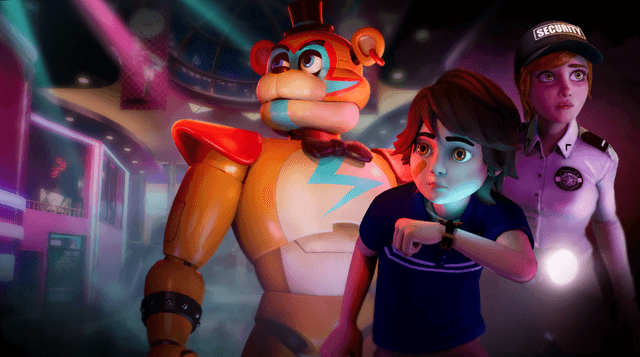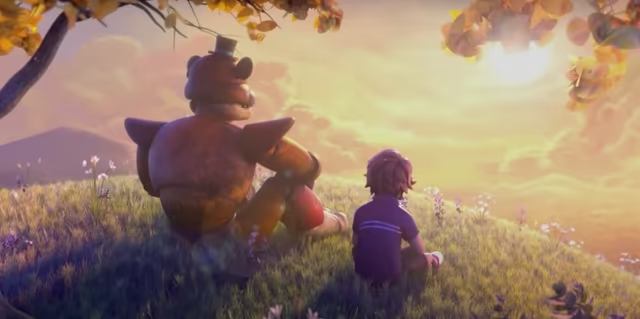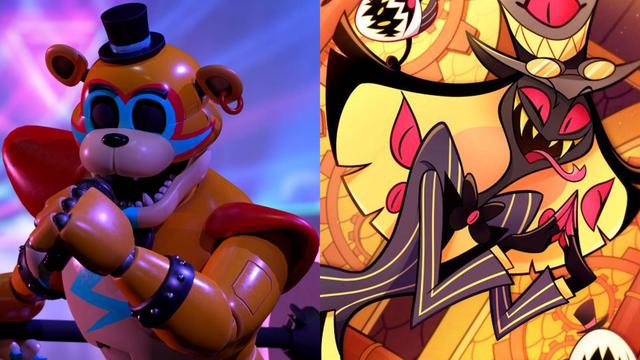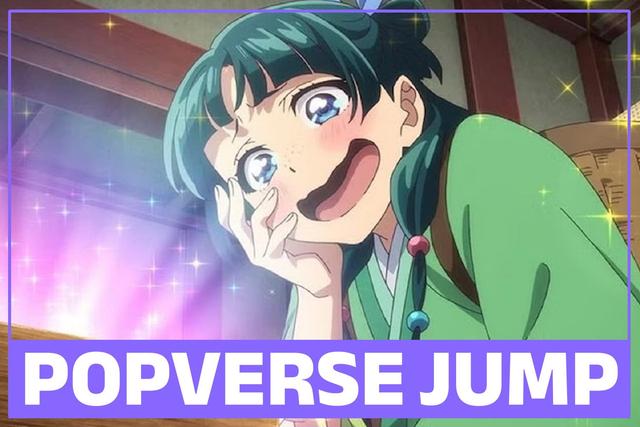If you click on a link and make a purchase we may receive a small commission. Read our editorial policy.
Wonder Woman is the hardest DC project ever for Tom King, and he explains why (and why he needs the challenge)
In an interview with Popverse, Tom King details the themes and challenges in Wonder Woman, including how fans changed his initial plans for the DC hero's story.

Starting their run together relaunching the title this past September, Tom King and Daniel Sampere have taken Wonder Woman in thrilling new directions as the Amazon superhero stands against the American government itself. Following the systemized persecution of Amazons living in the United States, Wonder Woman steps in to protect her sisters from the military. This not only tests her long-standing relationship with career U.S. Army officer Steve Trevor, but puts on a collision course with the new supervillain, the Sovereign, who pulls the strings on America’s patriarchal society from behind-the-scenes.
Frustrated by Wonder Woman meddling with his control over the country, the Sovereign attacks Diana Prince through her psyche, resulting in the superhero revisiting key moments from her past. Fortunately, Diana isn’t alone in this introspective odyssey, joined by a mental projection of Steve as she navigates her own mind to emerge and take the fight back to the Sovereign. On the outside, Wonder Woman’s fan-favorite allies, the Wonder Girls, are ready to lend their own support in toppling the Sovereign’s regime and defending their Amazon sisters.
In an interview with Popverse, Wonder Woman writer Tom King talks about the unique challenges and themes when writing the iconic DC hero compared to his past work, explains his rationale behind co-creating the Sovereign and what he represents, and teases what readers can expect as his run on Wonder Woman continues to up the ante with each issue. Also included is preview art from Wonder Woman #9, on sale this May, illustrated by Daniel Sampere and colored by Tomeu Morey.

Popverse: With Wonder Woman #9, you’re really focusing on the relationship between Diana Prince and Steve Trevor. After having written DC’s greatest couples, Bruce Wayne and Selina Kyle, and Clark Kent and Lois Lane, what do you find unique about Diana and Steve’s relationship?
Tom King: I think what’s unique about it is that it doesn’t have the universal acceptance of the other two. With Selina and Bruce, some people would say Vicki Vale or that kind of thing but, generally speaking, no one resists that Catwoman should be with Batman or that Clark should be with Lois. With Steve and Diana, I think people do have a resistance to it. Even my daughter is like “Is he good enough for her? She’s a god. Why is she with this colonel? He’s not even a general!”
What about him is special enough for him to be with one of the greatest, if not the greatest, superheroes in the world? Nobody says that about Lois or Selina, but they say that about Steve. I think there are a lot of reasons for that. Not in recent runs but, for many years, he was very generic. I don’t think he had much of a personality in the ‘40s, ‘50s, ‘60s, and ‘70s that people could point to and say “That’s a really interesting character!”
When it gets to the ‘80s and ‘90s onwards, they’ve done some really interesting things with him, but that’s 40 years where he was Boring Steve. I think that aspect of it makes it unique, in telling how you justify that these two characters belong together and have a special connection that’s worth the readers’ time.

Outside of Rorschach, I feel like Wonder Woman is the most pointedly political book you’ve done at DC, with the Amazons being persecuted and judged through the media and being hunted, along with the introduction of the Sovereign. How did you want to approach social commentary through the unique lens of Wonder Woman?
I feel like I’m the most blind to all of this. I don’t see Wonder Woman as a specifically political book, I see it as a superhero book. I may just be an idiot. [laughs] What is Wonder Woman fighting for? She’s fighting for equality, love, and all the things I was taught as a kid in the ‘80s that were the ideal things and that my mother was taught in the ‘50s and all the things my grandmother, who helped raise me, was taught in the ‘40s. I don’t see it as being political.
I think too many people are associating the bad guy with themselves. I’m like “You’re not the bad guy! Just like you’re not Lex Luthor or the Joker, you are not the Sovereign.” There are definitely political undertones to it and there will always be people who are trying to be shitty that we can’t get rid of, that’s the reason why superhero comics work. But, for the most part, I’m still on the side of Stan Lee and Jack Kirby, that superheroes fight bad guys, and this is a bad guy. I don’t see it as more complicated than that.
In terms of villains you’ve written that one can identify with, there are days when I feel like Elmer Fudd.
Don’t get me wrong, I’ve written villains that are worth identifying with. [laughs] I don’t want to say that Sovereign is completely evil, but I do consider him to be a Joker-level villain. When I write the Joker, I understand there’s a certain glory in imagining yourself to be a serial killer, like there’s a certain glory in imagining yourself to be the King of America with infinite power. But, at the end of the day, you want that villain to get punched in the face because they deserve it.

Across all of the great Wonder Woman villains – Cheetah, Ares, Doctor Psycho – how did you want Sovereign to uniquely challenge Diana?
I wanted to set up Diana as rebelling against a system. Cheetah, who is sort of her primary villain, she has a very complicated relationship with and Issue #10 is a Cheetah issue, that’s coming up next. Cheetah is going to play a big role in the book going forward, so you’re going to see a whole lot more of her. What I think makes Diana unique is, unlike Clark and Bruce, she’s rebellious. She’s trying to bring something revolutionary to the world. She’s trying to say that the world should not be the way that it is, she’s saying that it can be a better place – not in a fascistic way, but in a better way because she has faith in the people to create a better world.
I wanted to set up a villain that represented the opposite of that, that represented the status quo, that represented the system, the power, the man, whatever you want to call that thing that, when you’re born, is the great power that you’ll be fighting with for the rest of time. When you go out into the world, you find out you’re constantly being restricted by 400 years of history that has nothing to do with you and now it’s defining you. It’s like “I didn’t get a say in any of this!”
That’s what she’s blowing up, so I wanted a villain to represent that. That’s what Sovereign is, he’s the system. That’s why he’s a perfect Wonder Woman villain.

With Wonder Woman #9, we get this full trip down memory lane for Diana, leaning into her history, like moments out of the 2017 movie and her killing Maxwell Lord. How did you want to incorporate Wonder Woman’s mythos into your own story?
The idea of the issue was that Wonder Woman is that going through these three trials that Sovereign is putting upon her and we’re seeing that this is part of a larger plan to defeat Sovereign, in the Wonder Girls aspect that we’ve been cutting away to. She has to endure these three trials to get to the end and, at the first trial, she has to endure someone telling her lies about herself and get her to believe that she is what she is not.
The second trial is one of isolation, taking away what she loves in the world, which is people. She’s not Clark and Bruce, she wasn’t raised as an orphan. She was raised by a village as her family, so Sovereign takes that away. She fights that by going into her own mind and finding her own imagination and past and finding love there. What she finds is Steve, he’s there throughout her whole history. Steve and her have this argument the whole time where she’s like “You’re not even there! How can we be having this argument? Why am I imagining you? How can you possibly save me?”
In all these different contexts, Steve is always there going “Why are you here? What is the point of you?” She’s arguing with herself, this Steve doesn’t exist, and sometimes he agrees with her and sometimes he disagrees with her. What she learns by the end of the book is that she’s not alone and when you love someone, as she has, and been through all the things that her and Steve have been through when you depend on each other and save each other, you exchange souls in a way. That person is part of you and you’re part of that person.
She goes into her own mind learning she’s not alone and that she has a bit of Steve’s soul with her. That’s what carries her through this trial. The challenge of Wonder Woman as a superhero writer is that she’s a warrior, she’s tough but, generally speaking, she doesn’t fight with violence, she has to find another way to triumph. The love she made throughout her life makes her triumph in this issue, that’s what it’s about.

How has it been working with Daniel Sampere? Has getting to watch his work come in consciously affected how you’ve structured the story and issues?
It’s incredibly freeing just knowing that whatever you make, he’s just going to make it beautiful. Just today, I wrote a page and it’s Wonder Woman at the beach and she just goes into the water and I was like “This is the most boring page anyone has ever written. It’s just Wonder Woman walking into the waves.” But I could see in my head how Daniel would draw those waves and how Tomeu Morey would color the glint on the water and her sinking into it and it becomes symbolic of her cleansing herself, like a baptism.
It’s working with a net, knowing that whatever happens is going to look beautiful, so you take more risks, like doing an issue like this where it takes place all in her head with around 20 different scenes, knowing that Daniel is going to make it look beautiful and interesting. And Daniel is going to be on time! He’s productive, he gets it done! I work with the best artists in the world, some of whom are my best friends. If I gave some of them something like this issue, they’d be like “I’ll see you in six months.”
With Daniel, he’ll be like “I’ll see you in eight weeks” and that’s such a difference because I know the next issue will be Daniel on Cheetah, which will be fun. It’s an absolute joy and I got super lucky to work with him on this and I’ll forever be grateful.
How was it bringing the Wonder Girls into the story? We get to see Donna Troy, Cassie Sandsmark, and Yara Flor together with Diana.
My first instinct was not to use the Wonder Girls at all. I wanted this very much to be Wonder Woman’s book. Having written a lot of Batman where we involved the Bat-Family and going back to Batman after wanting to write just Batman, I didn’t want to make the same mistake again. This is going to be Wonder Woman-focused because, in a lot of books, she ends up not being the protagonist in her own book. It ends up being about her love interest or the villain.
With this, every single issue of this book is about why Wonder Woman is awesome and I never want to distract from that. What happened was, when I started writing the book, the fans were coming at me, not in a mean way, but in the kindest, nicest way, saying “We want to see the Wonder Girls! We want to see her family, and especially the three Wonder Girls!”
I love a good argument, but I like to think I can be convinced of things. I was convinced and I was like “I know this was Rule #1 in my bible, but I’m throwing it out.” With the encouragement of my editor, Brittany [Holzherr], we brought them into the book and it’s been incredibly rewarding. The three of them are incredibly fun to write and they give a new perspective on Diana and who she is, each of them in a specific way.
Donna is sort of the loyal sister, Cassie is the fangirl made good, and Yara is a cynical, tough warrior. I feel like you’re seeing different sides of Diana reflected back at her, which I love.

You’ve spent several months writing Wonder Woman now. Across all your time at DC, what’s been unique about writing Wonder Woman compared to your other work?
I just hit over a decade at DC, it’s been 11 years and about a decade since Grayson. If I had to say it in one word, it’s been hard. She’s harder to write than Batman, Superman, Grayson, or the Human Target. When I sit down to write her, it’s challenging. I just wrote a page, and I almost never do this, and just went “nope,” and I erased the whole page because I got it wrong. She’s been defined by so many different people in so many different ways over 85 years, so which strings do you follow and which do you ignore?
The stakes are incredibly high because people read these books like the Zapruder film; they’re looking for messages in the book. That can be a very good thing, because people want to talk about the book. One way to make Wonder Woman easy is to make it as boring as possible, by writing little, ethereal nothings that go nowhere and have no stakes. As soon as you put stakes in, everyone is looking over it and they start talking about it, which can turn into a bonfire that heats up all of comics.
It’s difficult but, at this point in my career, I need difficult. Don’t get me wrong, I want easy, I love easy. When things are easy, simple, and I get to write them, God bless. But if I’m doing my 15th suicidal boy who’s looking out a window sad, people are going to turn it off and go “That one-trick pony is one-tricking again.” I need something that’s going to force me out of my comfort zone and force me to really work hard and do bizarre stuff, like Superman getting a pedicure or Wonder Woman throwing the Washington Monument. I need that challenge right now and I’m grateful that it’s here.

I still feel like Danger Street was your most experimental DC book.
With Danger Street, the plotting was really difficult because it was 25 characters all crashing into each other. Page-to-page, that was easy to write because I could just put two random characters together and see what happens. Like, here is Lady Cop and Creeper – what are they going to sound like together? You just had fun that day.
The narrative voice was really hard, doing that fairytale voice; I don’t know why. With Wonder Woman, I’ve got to do Sovereign’s voice. He’s so fun but I’ve got to do so many three-to-five syllable words that it drives me insane. But I love it!
Follow Popverse for upcoming event coverage and news
Find out how we conduct our review by reading our review policy
Let Popverse be your tour guide through the wilderness of pop culture
Sign in and let us help you find your new favorite thing.
















Comments
Want to join the discussion? Please activate your account first.
Visit Reedpop ID if you need to resend the confirmation email.